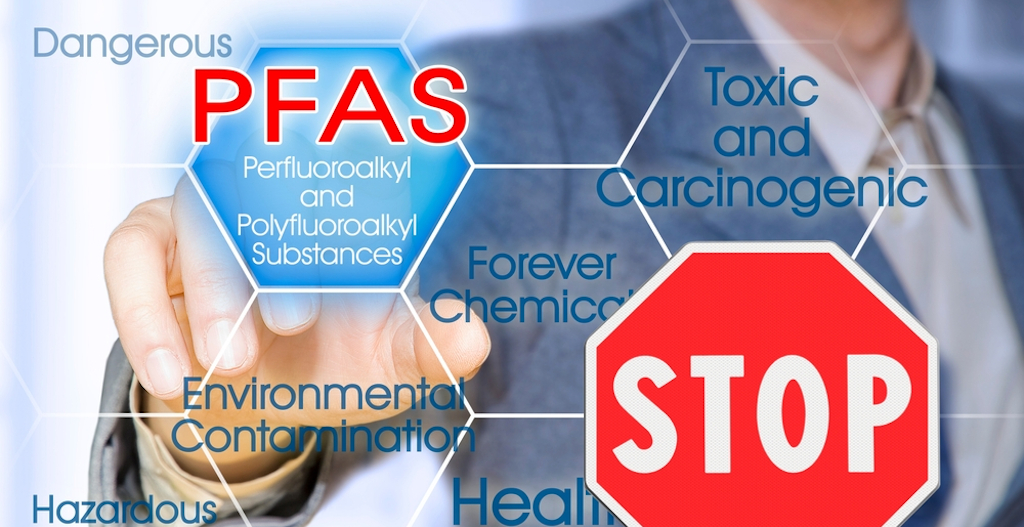The US Environment Protection Authority Will Make Polluters Pay to Clean Up Two ‘Forever Chemicals’
The step follows an extraordinary move that requires utilities to reduce the levels of carcinogenic PFAS compounds in drinking water to near-zero.
The Biden administration is designating two “forever chemicals,” man-made compounds that are linked to serious health risks, as hazardous substances under the Superfund law, shifting responsibility for their cleanup to polluters from taxpayers.
The new rule announced on Friday empowers the government to force the many companies that manufacture or use perfluorooctanoic acid, also known as PFOA, and perfluorooctanesulfonic acid, known as PFOS, to monitor any releases into the environment and be responsible for cleaning them up. Those companies could face billions of dollars in liabilitis.
The pair of compounds are part of a larger family of chemical substances known collectively as PFAS.
The compounds, found in everything from dental floss to firefighting foams to children’s toys, are called forever chemicals because they degrade very slowly and can accumulate in the body and the environment. Exposure to PFAS has been associated with metabolic disorders, decreased fertility in women, developmental delays in children and increased risk of some prostate, kidney and testicular cancers, according to the Environmental Protection Agency.
The chemicals are so ubiquitous that they can be detected in the blood of almost every person in the United States. One recent government study discovered PFAS chemicals in nearly half of the nation’s tap water. In 2022, the E.P.A. found the chemicals could cause harm at levels “much lower than previously understood” and that almost no level of exposure was safe.
The announcement follows an extraordinary move last week from the E.P.A. mandating that water utilities reduce the PFAS in drinking water to near-zero levels. The agency has also proposed to designate seven additional PFAS chemicals as hazardous waste.
“President Biden understands the threat that forever chemicals pose to the health of families across the country,” Michael S. Regan, the administrator of the E.P.A., said. “Designating these chemicals under our Superfund authority will allow E.P.A. to address more contaminated sites, take earlier action, and expedite cleanups, all while ensuring polluters pay for the costs to clean up pollution threatening the health of communities.”
Under the new rule, companies are required to immediately report releases of PFOA and PFOS that meet or exceed one pound within a 24-hour period to the National Response Center, and also to state, tribal, and local emergency responders.
The E.P.A. said it was important to quickly catch PFAS contamination because delays allow the chemicals to migrate into soil and water supplies. But the rule could also compel companies to clean up contamination that had occurred years before if is detected in the newly compulsory tests.
PFOA and PFOS are no longer manufactured in the United States but can be imported in the form of consumer goods such as carpet, leather and apparel, textiles, paper and packaging as well as in coatings, rubber and plastics, the agency said.
“It’s long past time for the polluters who poisoned all of us to be held responsible,” said Ken Cook, president of the Environmental Working Group, an advocacy organization. “This comes too late for all the people who were poisoned without their knowledge or consent and have paid the price for one of the greatest environmental crimes in history. But today’s designation of PFOA and PFOS as hazardous substances is the first step to bring justice to those who have been harmed.”
Shifting the cost of cleanup to polluters is “great news for the many communities grappling with PFAS contamination, many of which are also low income and communities of color,” said Dr. Tracey Woodruff, director at the Program on Reproductive Health & the Environment at the University of California, San Francisco. “This is another step toward protecting people from the health harms of this well-known toxic chemical.”
But industries that use the chemicals have said that the designation is too expensive and would lead to litigation that could impose new costs on businesses and communities and slow the cleanup of chemicals.
Hundreds of municipalities have sued PFAS manufacturers, alleging that the companies contaminated their water and soil.
Last year, 3M agreed to a $10.3 billion settlement with U.S. cities and towns over their claims of contamination. Under the sweeping settlement, 3M said it would pay out the money over 13 years to cities, counties and others across the country to test for and clean up PFAS in public water supplies. The company, which did not admit any liability, said the settlement covered remediation to water suppliers that detected the chemicals “at any level or may do so in the future.” 3M also said it would stop manufacturing PFAS chemicals by late 2025.
Ranier Lohmann, who leads the Superfund Research Center at the University of Rhode Island, said the new designation could help bring an end to the use of PFAS chemicals in consumer products, such as nonstick cookware, but not in large-scale industrial products, like industrial pipes or airplane wings.
The rule does not offer a new way for communities that have been contaminated with PFAS to compel chemical manufacturers to pay for removal. But Dr. Lohmann noted that it was designed to help reach that goal in the long run by forcing companies to clean up on-site PFAS contamination that could otherwise leach into drinking water.
The rule announced Friday also requires that federal entities that transfer or sell their property must provide notice about the storage, release, or disposal of PFOA or PFOS on the property and guarantee that contamination has been cleaned up or, if needed, that additional cleanup will occur in the future.
For decades, hundreds of military sites around the country used firefighting foam containing forever chemicals and nearby communities have some of the highest concentrations of PFAS contamination. Legal experts say it’s unclear whether taxpayers would now have to fund cleanup efforts or if the government would seek to recover costs from foam manufacturers.
The new listing will also lead the Department of Transportation to list and regulate these substances as hazardous materials under the Hazardous Materials Transportation Act.
The rule will go into effect in 60 days.
This article was published in the New York Times on 20th April 2024 – CLICK HERE




